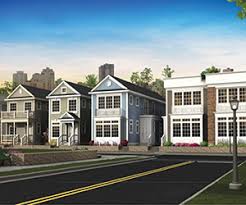League staff have recently helped educate legislators on the need to reinstate Michigan’s historic tax credit, which could have broad applications for multi-unit rental housing in historic buildings, upper story residential in downtown cores, adaptive reuse of underutilized buildings, and rehab of existing single-family housing. Accessible to both commercial rentals and owner-occupied residential, it would be one more excellent tool in the toolbox, and not only encourage reinvestment in our existing downtowns and already-built-out neighborhoods, it would reduce the ecological impact of building demolition in Michigan landfills.
Related to this push is the demand for a certain kind of housing – think smaller (2,000 sf or less) missing middle – in the workforce price range of 80 to 120% of Area Median Income (AMI). This demand is far outpacing current supply in cities. Part of the problem a lack of multi-family housing options. Part of it is our aging single-family housing stock, a lot of which desperately needs upgrades and repair. Many people don’t buy those older homes in our city centers because of concern over the hassles of fixing up an old house and a dearth of skilled contractors. (Again, this is where the historic tax credit would be tremendously helpful in increasing the relative affordability of this work.)
We also know that new construction costs the earth to build, so the luxury market is where the majority of new builds are happening. Another way to address the housing mis-match could be a loan fund for homebuyers that would allow them to gain access to the capital needed for immediate improvements upon purchase, because many people barely squeak through closing with enough money to buy curtains, much less a new HVAC system.
But even if we get that Michigan historic tax credit back, and we start addressing capital needs in creative ways, we’re still going to need new construction and a skilled labor force to meet our housing demands.
Quickly. And on a budget.
The Need for Skilled Trades
One proactive step could be to address this need by putting a big investment in building out the trades apprenticeship programs. The Michigan Historic Preservation Network created a rather successful program last year doing trades training, and there are other small scale apprenticeship programs out there, but those programs striving to train a dozen people are no match for a statewide initiative that could be created if the resources of a larger government department or non-profit foundation were tapped.
Another way to incrementally expand the skilled trades professions could be to develop dedicated factories for modular housing, therefore creating reasonably permanent construction jobs in a geographically stable area.
“But, Modular Housing. REALLY?”
Yeah, really. What we really need is a variety of solutions – not one or two good ideas will solve our housing needs. Particularly in the more rural areas of Michigan, those with flat to limited new housing activity, this kind of model would provide the consistency needed for keeping skilled tradespeople engaged in steady work.
Let’s now address the elephant in the room: perceptions of quality. We’re not talking cheap construction, not cookie-cutter plastic houses that all look like they came from Playskool. This kind of housing is known as “indoor stick built” and it isn’t your grandmother’s double-wide trailer. These housing units are widely customizable, and are constructed in sections of moderate to high grade materials such as metal stud walls, integrated insulation and mechanicals, double or triple paned windows, and fiber cement board siding. The built sections are then trucked from the factory and assembled on a foundation already prepared on site. They are available in a variety of configurations to avoid nauseating repetition. This method of construction is, on average, cleaner and more efficient than standard new construction methods, and it minimizes waste.
What are we talking about for prices? According to our recent research with the Michigan Landbank Fastrack Authority, cost for construction is $110 to $115/sf, which is tracking at about $170,000 for a 1,500 sf home, plus land and site work. Some of these units are already being built in Michigan, with a new project led by the Kent County Landbank in Grand Rapids to do infill construction in existing neighborhoods by constructing homes on vacant parcels. And many more Michigan communities are expressing interest.
This also not the first time that this sort of idea has come into vogue in Michigan. As discussed in Mid-Michigan Modern, a 2016 publication by Susan Bandes of Michigan State University, modular construction was one of the ways communities responded to the market demands for workforce housing in the immediate post-WWII era. There are still a lot of mid-twentieth century neighborhoods across our state that were built with modular construction. They just don’t look like it. Consider also the Sears Kit Homes that got built here in the mitten. These beloved homes were products of a factory system of mass-made, high quality homes delivered from the warehouse. Or, closer to home, the Bay City-based Aladdin Homes chosen from pattern books and “Built in a Day.” Only a few steps away from current-era indoor stick-built homes.
In the end, modular housing indoor stick-built housing may not be THE next big housing solution. But it is one more good quality solution that might work for a segment of the population, while we keep working on other fronts, too.
